Public Housing Journey
This past week, most of the Public Housing Community Board got on a bus and went to four different NYCHA communities, three in the Bronx and one on the west side of Manhattan. One of the main focuses of the PHCF is outdoor space. Having a beautifully functioning outdoor space is essential to a community. It improves health, reduces stress, boosts creativity, creates community, and is a win for everyone.
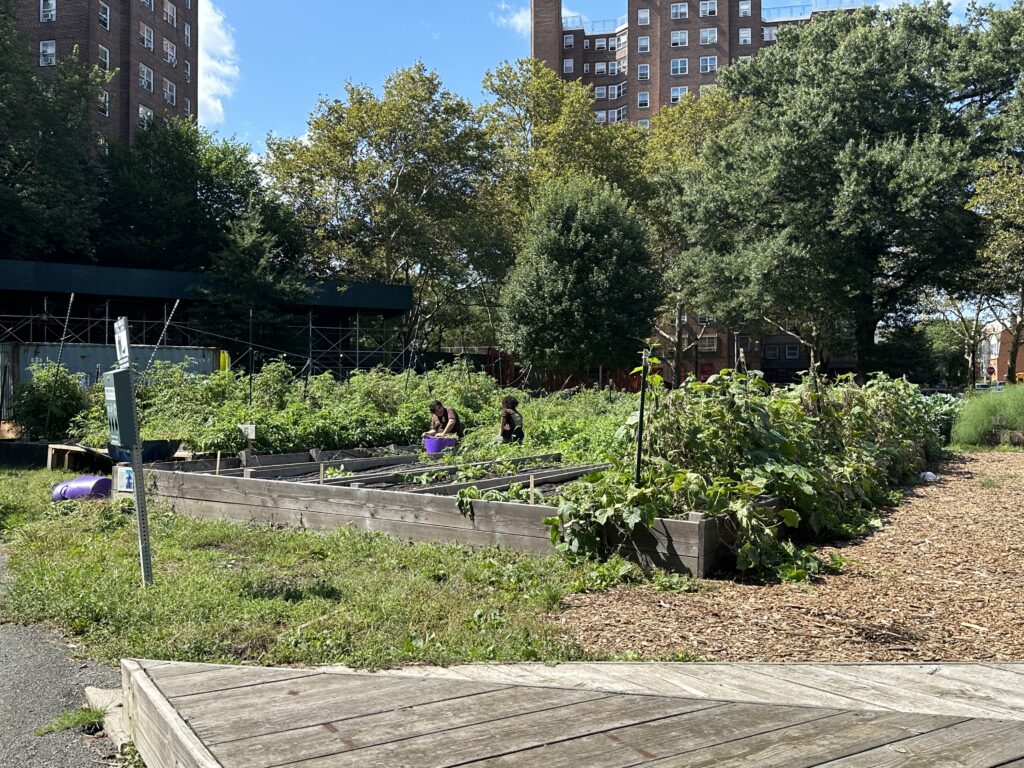
Our first stop was the Forest Houses, built in 1956, home to 2900 residents in 1350 units. Green City Force opened a 1.3-acre urban farm on the campus in 2018. Green City is partners with the Fund and has six farms on NYCHA campuses across the city. Since 2013, they have distributed 150,000 pounds of produce to residents, have welcomed 28,000 visitors to their farm stands, and have educated over 4,000 students in farm-based learning. Yes, in the Bronx!
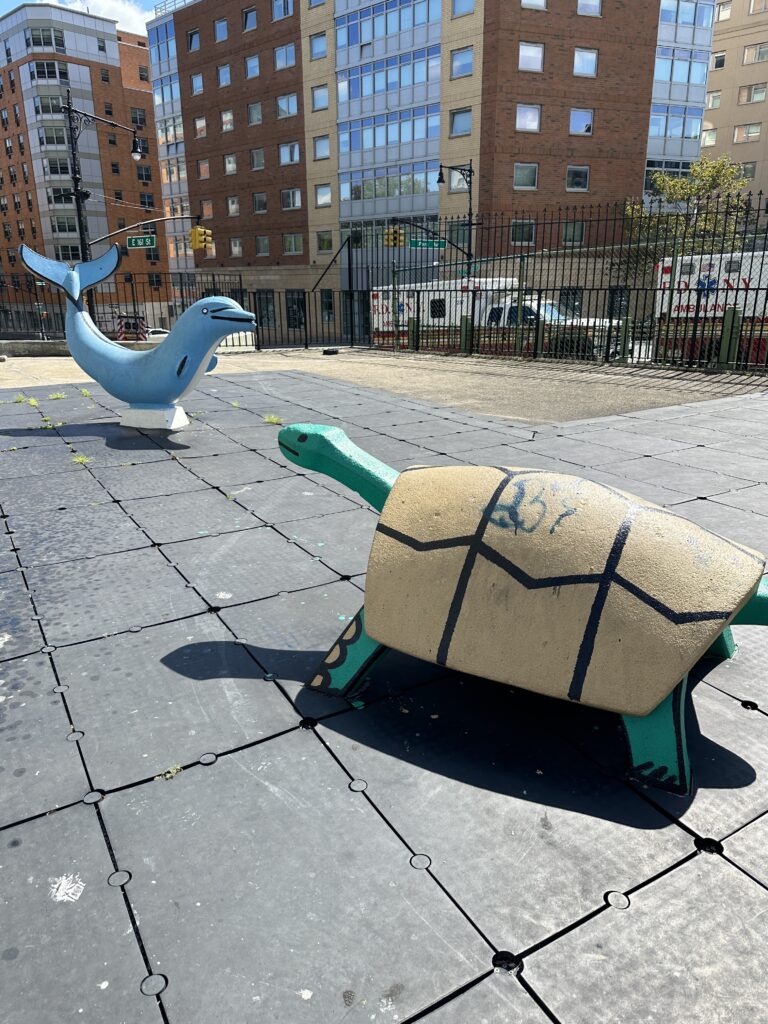
Our next stop was Morrisania Air Rights, built atop the Metro North Line in 1980, home to 1685 residents. In this particular area, there is a high rate of autistic children. We await final approval to build a sensory playground and sensory garden. Upgrading this park will be game-changing for the residents of this community. These playground fixtures are unacceptable.
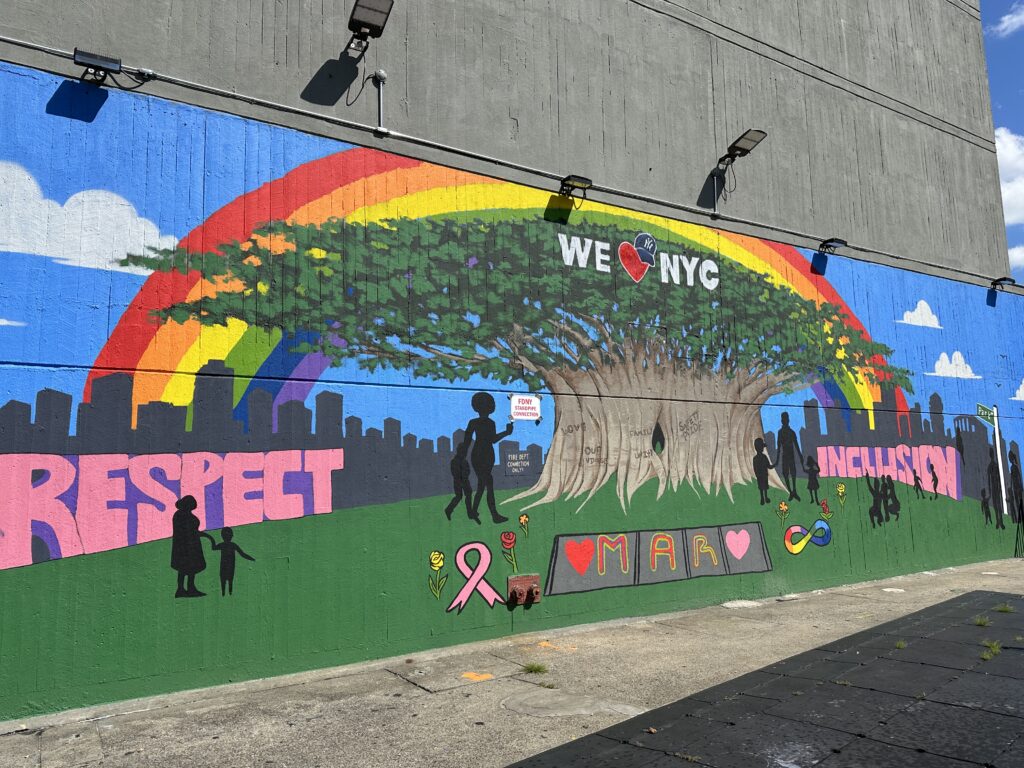
The mural is already there, waiting for a park everyone deserves.
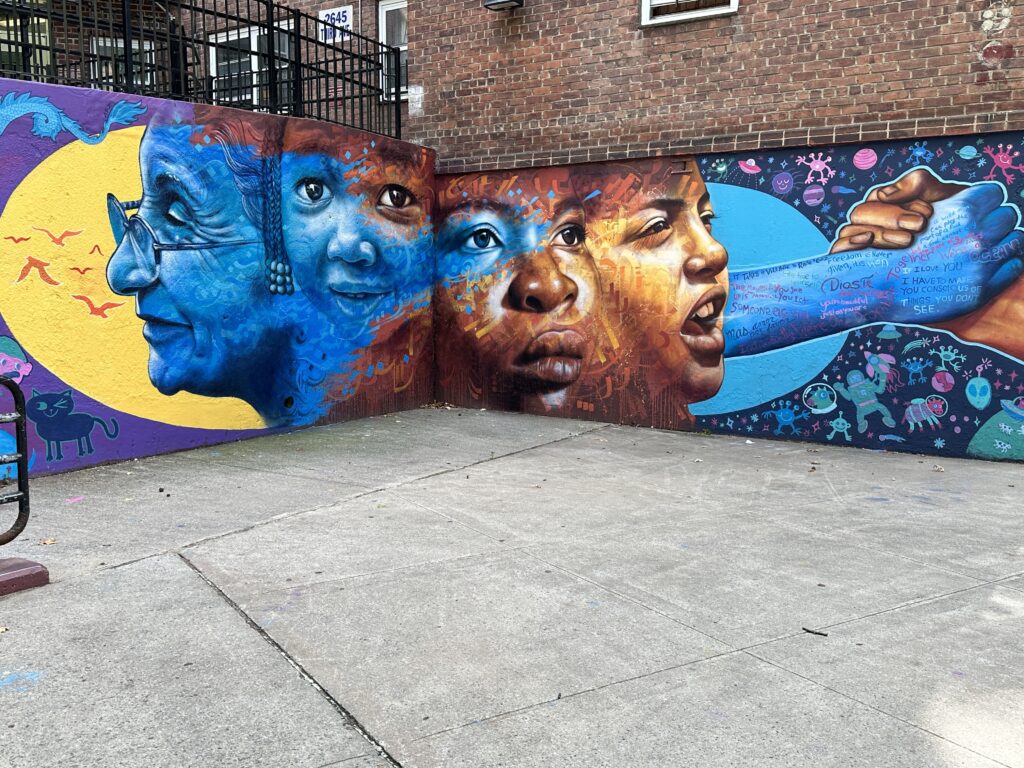
Next was Patterson Houses, built in 1950 and home to over 4000 residents. We have been working with the Green Space Connections program to transform the outdoor space. The residents have been given capital on green space projects, including funds to design and install murals on the site. This mural was unveiled this past August, depicting the famous residents who grew up at the Patterson Houses.
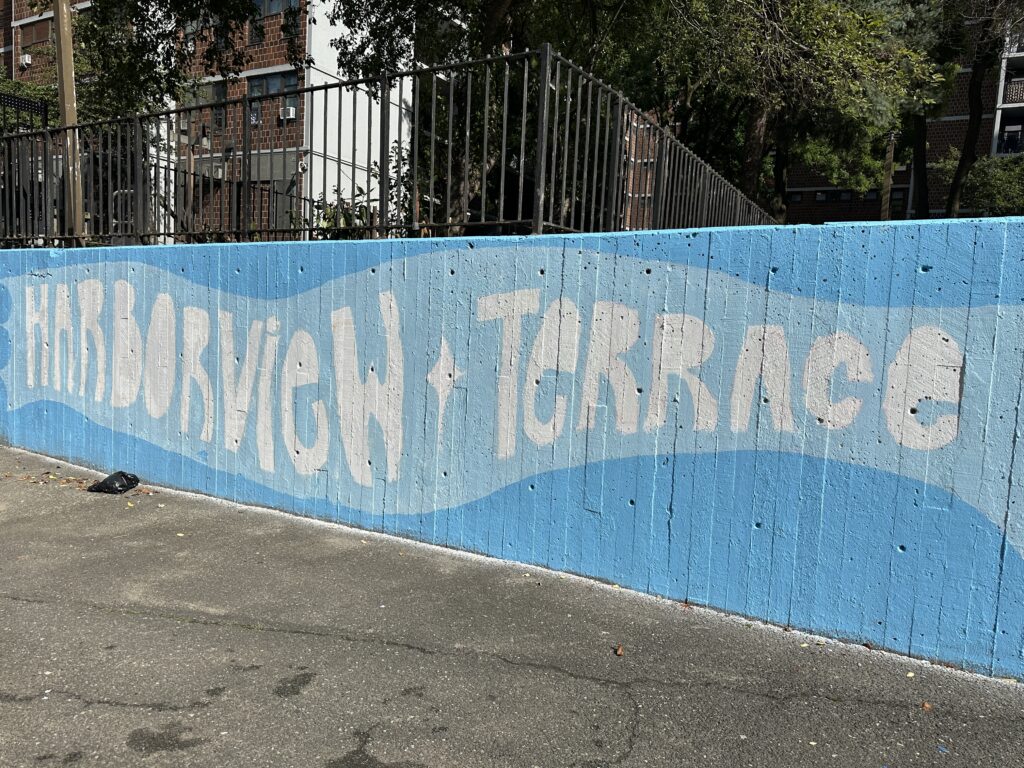
The last stop was Harborview Terrace Houses, built in 1977 as part of the Clinton Renewal plan, home to 650 residents, 80% of whom are seniors. Thanks to the Pershing Square Foundation, we are transforming a 13,000-square-foot playspace on the campus with murals, asphalt art, a new basketball court and pickleball court, ping pong tables, and seating areas. I am excited to return and see the completion of this project.
The people who live in these buildings are the heart and soul of this city. Each community leader we met are mini-mayors who are trying to do whatever they can to unite the neighborhood. Creating beautiful, diverse outdoor environments at NYCHA campuses across NYC changes these neighborhoods for the NYCHA residents and those living around them.
We believe at the Public Housing Community Fund that our impact is changing the health of each of these communities. These areas have been underfunded for way too long. Each NYCHA community should have new urban landscaping connected to outdoor facilities, including ground-floor community centers. Once that is complete, a private-public partnership endowment should ensure these spaces are all maintained to the highest degree so that we never find these communities ignored again. Like Madison Square Park, a drug-laden mess of a park in the early ’80s, public-private partnerships transformed the park and the neighborhood.
One out of every sixteen NYers lives in public housing. Imagine the impact on their lives and the surrounding communities just by rebuilding their parks. It is the public-private and non-profit organizations that will help improve these open spaces. Contact me if you are reading this and are interested in supporting our efforts. It is time to give these public-facing communities the same love and commitment given to our shared parks.

